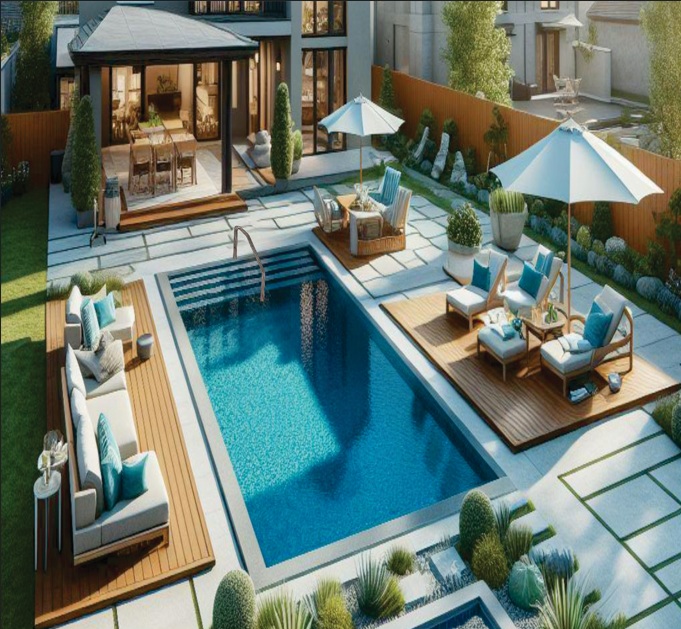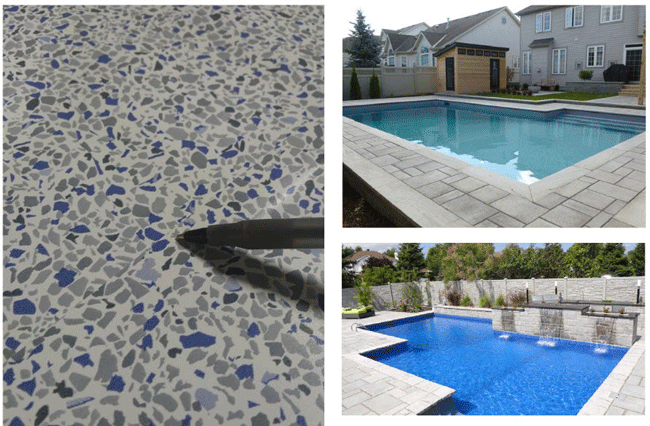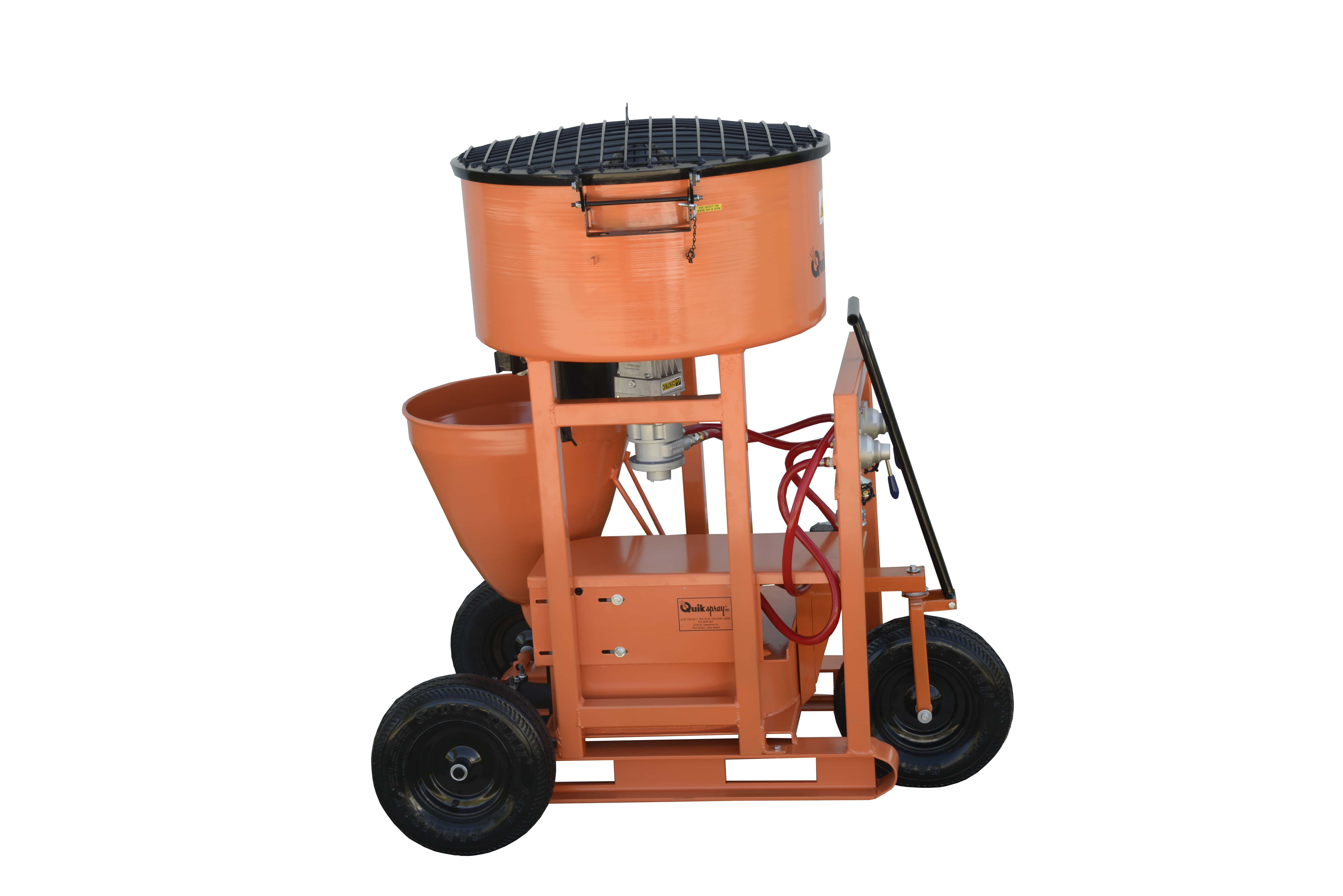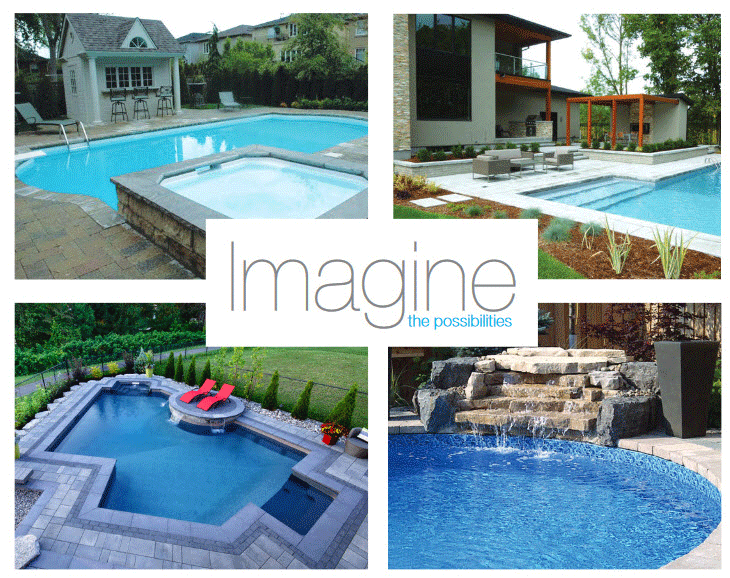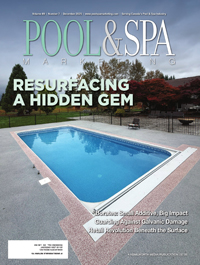Indoor Pool Installation 101
Indoor pool environment control
Air quality in indoor pool environments has come under heavy scrutiny in recent years. Ideally, the humidity level should be maintained at 50 to 60 per cent. This can be achieved by exchanging humid air for fresh, drier air, or by installing a dehumidification system.
The dehumidification system should be carefully designed to make sure air is not forced across the pool surface, which can speed up evaporation. Rather, air should be evenly distributed over the outside walls to prevent condensation. A properly designed dehumidification system, along with regular maintenance, is important to keeping the pool and equipment in good working condition.
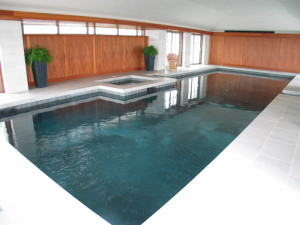
Dew point occurs when the ambient air temperature reaches the temperature of the water. Therefore, to reduce evaporation and improve bather comfort, the air temperature inside the enclosure should be kept two to four degrees above the pool water temperature. Evaporation increases as the room and water temperatures drift apart. This will begin as water droplets on the windows, followed by a sensation of rain in the room. As many people like to heat their pools to 27.7 C (82 F), heating the enclosure to 28.8 or 30 C (84 or 86 F) is not practical. This is why a properly-sized dehumidification system is extremely important. Evaporation can also be reduced dramatically by limiting the amount of time water features (e.g. waterfalls) run.
Evaporation and humidity can be further reduced (by 50 per cent) by using an automatic pool cover. An automatic cover is the most effective tool for reducing dehumidification costs—sometimes by hundreds of dollars each month.
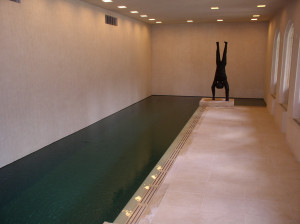
Proper deck drainage is also important as it prevents water from accumulating, which further contributes to evaporation and high humidity levels. From a design perspective, a low-profile strip drain placed around the pool’s perimeter looks much cleaner than traditional hub drains placed every 2.4 to 3 m (8 to 10 ft). Radiant floor heating systems should also be recommended to the client as an additional measure to reduce evaporation and to keep deck areas dry. These systems will dry up any standing water, as well as make the room more comfortable for bathers.
Windows, skylights, and sliding glass doors are a great way to create an open feeling, but they can also lead to excessive heat in the summer. Better yet, an open-roof system and several sliding glass doors will enable the homeowner to treat their indoor pool like an outdoor pool in the summer.
To keep these windows from fogging up, airflow must be maintained across the entire width of the windows. Some architects recommend placing vents in both the floor and the ceiling near each pane to ensure a clear view.
All of these items need to be taken into account by the HVAC designer. It is highly recommended the client finds an engineer who has experience in dealing with pool rooms when designing the indoor aquatic environment. The dehumidification manufacturer can also be contacted for assistance as they will know who has successfully installed and completed an indoor pool with an HVAC system.
Mechanical space and equipment
Do not underestimate the amount of space needed for the equipment room. An undersized equipment room can create near impossible working conditions. It makes repairs difficult in the event something goes wrong and the equipment needs to be repaired or replaced. Therefore, during the design process, try to sketch out the space required for pumps, filters, heating manifolds, and the dehumidification system. Also, provide these plans to the architect as it will ensure the space needed for a properly plumbed mechanical system is specified. If the pool is going to be maintained by a service company, suggest the client consider the idea of making the room accessible from the outside. This way, service technicians do not have to go through the home to access the equipment.
Pool equipment will also make noise; therefore, for clients who are sensitive to the constant hum of a pool pump and/or dehumidification system, do not surprise them with loud equipment. Noise reduction measures through the use of variable speed pumps (VSPs), plumbing modifications, and sound proofing of the mechanical room will help to reduce noise from the mechanical system.
Another consideration is odour. Any pool that is sanitized with chlorine will emit chloramines, but the smell can be much more pronounced in an indoor pool. Good ventilation systems are capable of reducing these odours. Sanitation supplements, such as a ultraviolet (UV) system, ozonator, or mineral purifiers can also help reduce odours and the production of chloramines. Bromine, another recommended sanitizer, is also less odorous than chlorine.
Indoor pool lighting
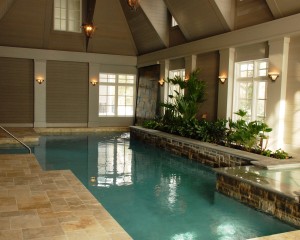
Use natural light to flood the indoor pool space by incorporating a number of skylights, windows, and sliding doors. At night, however, when the sun sets and natural light is no longer an option, adequate lighting is required for nighttime enjoyment and safety.
In this case, a combination of underwater lighting and wall sconces will typically provide sufficient and attractive illumination. Overhead lights should be avoided because the bulbs are too difficult to access when they need to be replaced. For lighting near the ceiling, consider fibre-optic cable fixtures, which use remote illuminators that are easily accessible. The lighting should be subtle—just enough to create the right ambiance. If it is too bright, it could draw unwanted attention through the windows and make the space feel cold and uninviting.
The role of the pool expert
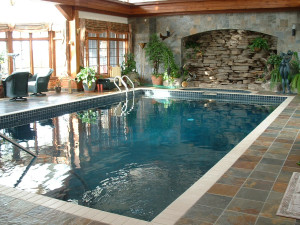 It is the responsibility of the pool construction expert to lead their clients by making these suggestions and recommendations in the early planning stages. Understanding the client’s motivation and their reasons for wanting an indoor pool will help guide them to make choices that will increase their enjoyment.
It is the responsibility of the pool construction expert to lead their clients by making these suggestions and recommendations in the early planning stages. Understanding the client’s motivation and their reasons for wanting an indoor pool will help guide them to make choices that will increase their enjoyment.
Considering the heating and ventilation along with lighting and ongoing maintenance will help manage their expectations and ensure a successful installation. An indoor pool allows the homeowner to control everything about their aquatic environment—no matter what type of weather Mother Nature has in store.
 Melissa Brown is the president of BonaVista pools in Toronto, a family-run, second-generation company her father Bob Brown started in 1969. She is a professional engineer who loves being in the field with her crew building pools. Brown can be reached via e-mail at melissa@bonavistapools.com.
Melissa Brown is the president of BonaVista pools in Toronto, a family-run, second-generation company her father Bob Brown started in 1969. She is a professional engineer who loves being in the field with her crew building pools. Brown can be reached via e-mail at melissa@bonavistapools.com.

